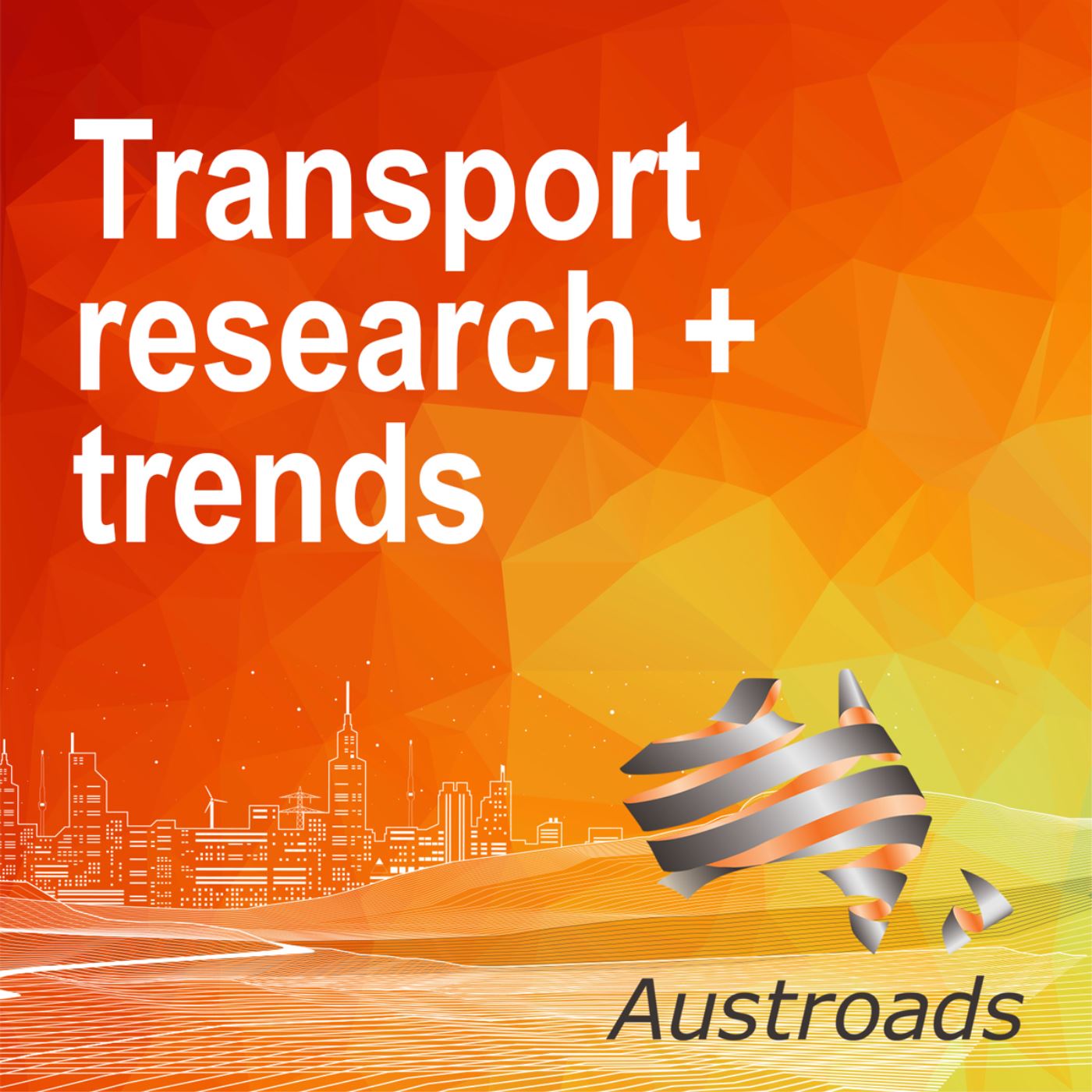Episodes
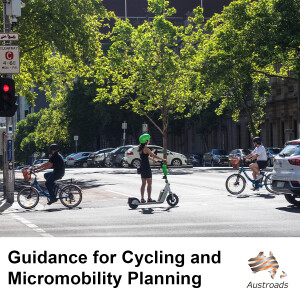
Monday Mar 31, 2025
Guidance for Cycling and Micromobility Planning
Monday Mar 31, 2025
Monday Mar 31, 2025
This webinar introduced the new Austroads Guidance for Cycling and Micromobility Planning, a resource for professionals seeking to deliver safer outcomes for all road users. The project aimed to deliver a consolidated and nationally consistent approach to cycling and micromobility planning and includes recommended changes to the Austroads Guide to Traffic Management.
The webinar shared the key themes that emerged from research and consultation. It introduced the three overarching recommendations of the Guidance: providing stronger links to best-practice cycle planning and design principles; recognising that considered terminology can help deliver projects; and updating the AGTM's scope to include wider micromobility options. Recommendations are supported with practical tools and strategies to facilitate better cycling and micromobility planning outcomes. The webinar was presented by Clare Huggins and James Laing, and moderated by Mary Haverland.
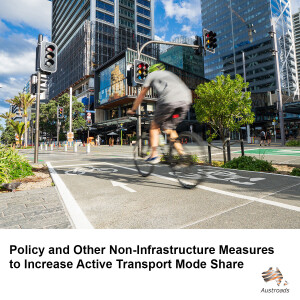
Wednesday Jul 24, 2024
Policy and Other Non-Infrastructure Measures to Increase Active Transport Mode Share
Wednesday Jul 24, 2024
Wednesday Jul 24, 2024
This is the final webinar in the three-part webinar series to present the outcomes of the Austroads project “Prioritising Active Transport”.
Presenters Dr Elliot Fishman and Andrew Somers focus on various policies and other non-infrastructure interventions that can be used to increase levels of active travel. These interventions include measures such as speed reduction, policies to integrate public transport with walking and cycling, pricing measures for motor vehicle use and parking and shared micromobility programs.
The session also covers how policy and other non-infrastructure interventions perform in terms of their impact on growing active transport mode share, in comparison to the cost and complexity of implementing these initiatives.

Thursday Jul 11, 2024
Gender Sensitive Urban Design Guidelines
Thursday Jul 11, 2024
Thursday Jul 11, 2024
Cities throughout the world are recognising many public spaces are not welcoming or inclusive, particularly for women, girls, gender diverse groups and vulnerable people.
This webinar, presented by Anna Chauvel and Richmond Henty, focuses on Canberra's first Gender Sensitive Urban Design Guidelines. The guidelines will help planners, engineers, architects, landscape designers and developers create urban spaces that reflect the needs, interests, and routines of the city’s diverse community, enriching people’s daily lives.
Developed following over two years of community and stakeholder engagement, the guidelines will aid with the design and delivery of public urban spaces as well as transport and infrastructure projects, including wayfinding. The guidelines are one of the actions to come out of the Second Action Plan 2020-22 of the ACT Women’s Plan.
The guidelines will deliver practical outcomes to the daily lives of women, girls, gender diverse and vulnerable people in Canberra improving their safety, access, mobility, health, and enjoyment in public spaces.
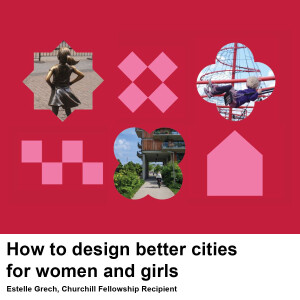
Tuesday Jul 09, 2024
How to Design Better Cities for Women and Girls
Tuesday Jul 09, 2024
Tuesday Jul 09, 2024
Safety is often the first thing that comes to mind when thinking about transport and city planning from a gender perspective, but feeling safe should be the baseline, not the benchmark when it comes to inclusive cities.
From Barcelona’s Superblocks to women’s cycling rates in Copenhagen, through to building women’s autonomy into the business case, this webinar’s presenter Estelle Grech shares key insights from her Churchill Fellowship where she travelled to 14 cities around the globe to research how to design cities for women in girls.
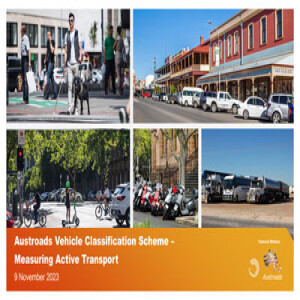
Thursday Nov 09, 2023
Austroads Vehicle Classification Scheme – Measuring Active Transport
Thursday Nov 09, 2023
Thursday Nov 09, 2023
Austroads has developed an extended vehicle classification scheme (EVCS) to enable improved understanding and monitoring of the evolving vehicle mix on Australian and New Zealand roads in traffic and transport surveys. This builds upon the existing 1994 vehicle classification scheme.
The EVCS provides greater granularity for each of the existing 12 classes of vehicles and adds a new class for active transport to address the need to count a variety of active transport users such as pedestrians, skateboards and e-scooters.
The EVCS will allow transport agencies to better manage transport demand within and between modes, survey active transport and understand how demands integrate with other modes.
The scheme will help identify changes in transport operational performance and optimise plans for effective access management and asset maintenance.
This webinar is the third session in a three-webinar series, and it will focus on measuring active transport. The first webinar covered heavy vehicles and the third session discussed the changes to light vehicles.
This webinar, presented by Drew Gaynor and David Johnston, focuses on active transport and discusses:
- the creation of level 3 class 20
- the greater granularity in level 4 subclasses
- emerging challenges in categorising class 20 elements
- the use of alternative counting technologies.
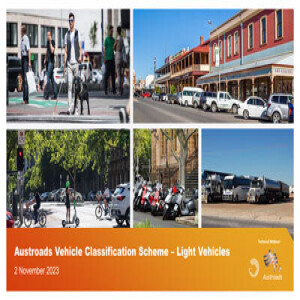
Thursday Nov 02, 2023
Austroads Vehicle Classification Scheme – Light Vehicles
Thursday Nov 02, 2023
Thursday Nov 02, 2023
Austroads has developed an extended vehicle classification scheme (EVCS) to enable improved understanding and monitoring of the evolving vehicle mix on Australian and New Zealand roads in traffic and transport surveys. This builds upon the existing 1994 vehicle classification scheme.
The EVCS provides greater granularity for each of the existing 12 classes of vehicles and adds a new class for active transport to address the need to count a variety of active transport users such as pedestrians, skateboards and e-scooters.
The EVCS will allow transport agencies to better manage transport demand within and between modes, survey active transport and understand how demands integrate with other modes.
The scheme will help identify changes in transport operational performance and optimise plans for effective access management and asset maintenance.
This webinar, presented by Drew Gaynor and David Johnston, is the second session in a three-webinar series, and it focuses on the changes to light vehicles. The first webinar covered heavy vehicles and the third session will provide information on measuring active transport.
This webinar discusses:
- level 3 classes 1 and 2
- the greater granularity in level 4 subclasses
- thresholds between classes 2 and 3
- the use of alternative counting technologies.
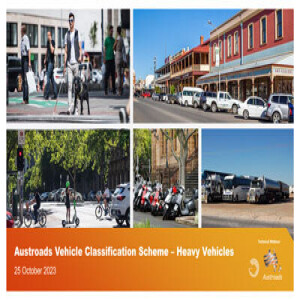
Wednesday Oct 25, 2023
Austroads Vehicle Classification Scheme – Heavy Vehicles
Wednesday Oct 25, 2023
Wednesday Oct 25, 2023
Austroads has developed an extended vehicle classification scheme (EVCS) to enable improved understanding and monitoring of the evolving vehicle mix on Australian and New Zealand roads in traffic and transport surveys. This builds upon the existing 1994 vehicle classification scheme.
The EVCS provides greater granularity for each of the existing 12 classes of vehicles and adds a new class for active transport to address the need to count a variety of active transport users such as pedestrians, skateboards and e-scooters.
The EVCS will allow transport agencies to better manage transport demand within and between modes, survey active transport and understand how demands integrate with other modes.
The scheme will help identify changes in transport operational performance and optimise plans for effective access management and asset maintenance.
This webinar, presented by Drew Gaynor and David Johnston, is the first session in a three-webinar series, and it focuses on the changes to heavy vehicles. The second webinar will cover light vehicles and the third session will provide information on measuring active transport.
This webinar discusses:
- level 3 classes 3 to 12
- the greater granularity in level 4 subclasses
- better description of axle groupings
- the creation of a new class 19 for heavy vehicles that do not fit readily into the prescribed classifications
- backward compatibility with existing heavy vehicles counting
- further validation of some sections.
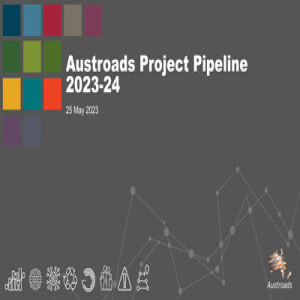
Thursday May 25, 2023
Austroads Project Pipeline 2023-24
Thursday May 25, 2023
Thursday May 25, 2023
This webinar is beneficial to consultants who may be interested in tendering for Austroads projects. The session covers new Austroads projects lined up for the 2023-24 financial year, Austroads process around research data collection and what is required to become a successful tenderer.
To find information about Austroads' current tenders, visit the tenders webpage. On that page, you can also subscribe to our Tenders newsletter to receive alerts when a new project is advertised.
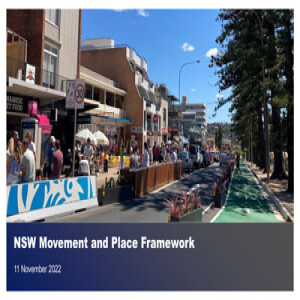
Friday Nov 11, 2022
NSW Movement and Place Framework
Friday Nov 11, 2022
Friday Nov 11, 2022
Movement and Place is a multi-disciplinary, place-based approach to the planning, design, delivery and operation of transport networks. It broadens our thinking about our roads and streets beyond their functional role in supporting movement - they are also places for people to live, work and spend time.
It is part of an international shift towards embracing the importance of people, and place when designing, planning or operating streets and roads. It recognises the complementary relationships between place and movement and matching the road or street to its desired function within the wider network.
This webinar, presented by Arjan Rensen, Ben Cebuliak and Gareth Collins, provides an overview of the whole-of-government NSW Movement and Place Framework and how it supports Austroads Guidance, Australian Standards and the Global Street Design Guidelines as they apply in different contexts across NSW. The Framework invites practitioners to take collaborative, spatial and vision-led approaches and offers a common language and process of collaboration to support meaningful discussions across all levels of government, industry, and communities.
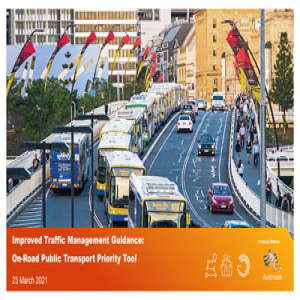
Tuesday Mar 23, 2021
Improved Traffic Management Guidance: On-Road Public Transport Priority Tool
Tuesday Mar 23, 2021
Tuesday Mar 23, 2021
On-road public transport (ORPT) priority treatments improve public transport’s level of service increasing reliability and travel time benefits for users.
Austroads has developed a practical process (referred to as a ‘tool’) to guide practitioners through the selection of the appropriate ORPT priority treatments for any road scenario. The tool is documented in the 2020 Austroads report AP-R645-20 On-Road Public Transport Priority Tool.
This webinar, presented by David Green and Graham McCabe, provides an overview of the tool explaining how it was developed and how practitioners may use the tool in their day-to-day work.

